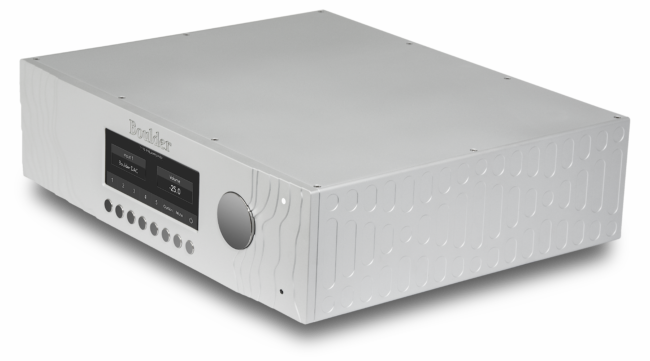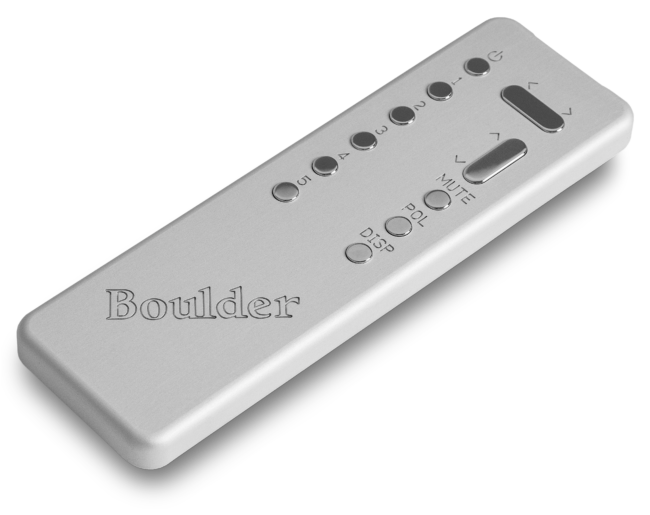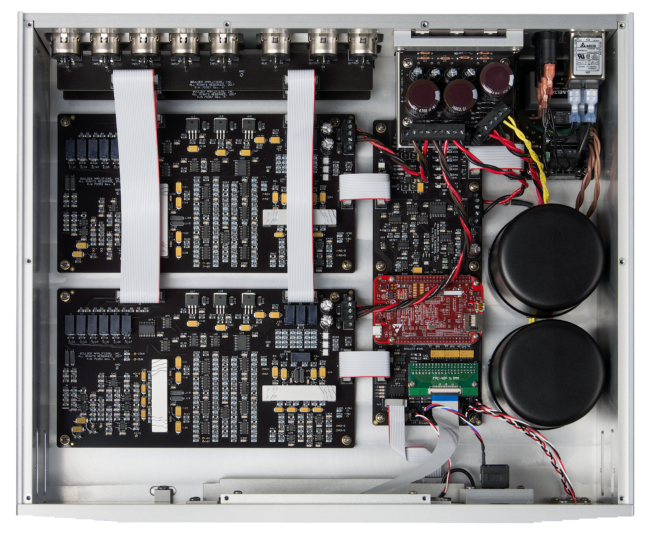Boulder 1110 Preamplifier
28.900,00€ VAT incl.
Shipping to France offered from 250€
What is it that makes the 1110 preamplifier so special? It is something rare, an overachiever, a unique combination of reference-level performance and compact, convenient design. It is at once familiar in size and shape and yet completely new in aesthetic design detail. Perhaps what makes it so special is that it takes such amazing sight, sound, use, and feel and packs them all into a single chassis. It is the perfect mix of traditional function and cutting-edge technology, earning more than 10 international product awards from media around the world.
It is, after all, a Boulder, and every Boulder is special.
Features
Five pairs of programmable, differentially-balanced inputs
Balanced version of Boulder’s own analog volume control, descended from the 3010 Preamplifier, for superior clarity and noise elimination
Each input can be configured for Theater Mode when integrated into home cinema systems
Large, easy-to-read, LCD display
Available IP control connection for simple use connection to home automation systems
Unique front panel design displays the topographical map of Flagstaff Mountain, located near Boulder, Colorado
Full surface-mount circuit board architecture manufactured on Boulder’s own precision pick-and-place machine
Comprehensive setup and options programming for all inputs and preamplifier functions
Automated online software management for worry-free updating
Boulder’s own 983 gain stage means excellent buffering and current drive for long cable runs
Embedded ARM processor controls all preamplifier functions and setup options
Dual-mono audio boards isolate left and right channels for perfect stereo separation in a single-chassis design
Specs
1110 Preamplifier
Input Connections
5 pairs balanced line level
Output Connections
2 pairs balanced main, 1 pair balanced auxiliary
Volume
100 dB range in 0.5 dB steps (200 steps) or 1.0 dB steps (100 steps)
Maximum Input Level
6.0 Vrms
Maximum Output Level
14.0 Vrms
THD+N, 2V Output, 20 Hz – 20 kHz
0.0015% (-96.5 dB)
Output Loaded with 150 ohms
Less than 1 dB distortion change, 20 – 10 kHz
Maximum Voltage Gain
20 dB
Auxiliary Path Gain, Balanced Output
8.5 dB balanced
2.5 dB unbalanced
Frequency Response, 20 Hz – 20 kHz
+0.00, -0.03 dB
Frequency Response, -3 dB at
0.02 Hz and 250 kHz
Clip to Noise Ratio
118 dB
Crosstalk, L to R or R to L
-101 dB or better, 20 Hz to 20 kHz
Crosstalk, Adjacent Inputs
-115 dB or better, 20 Hz to 20 kHz
Input Impedance
100k ohms, balanced
50k ohms, unbalanced
Output Impedance
100 ohms, balanced
50 ohms, unbalanced
Control System
IP (Ethernet), IR, Boulder Net
Weight
36 lbs. (16.3 kg),
Shipping: 49 lbs. (22.2 kg)
Power Requirements
100, 120, 220-240 VAC, 50-60 Hz
Power Consumption
75W maximum
















